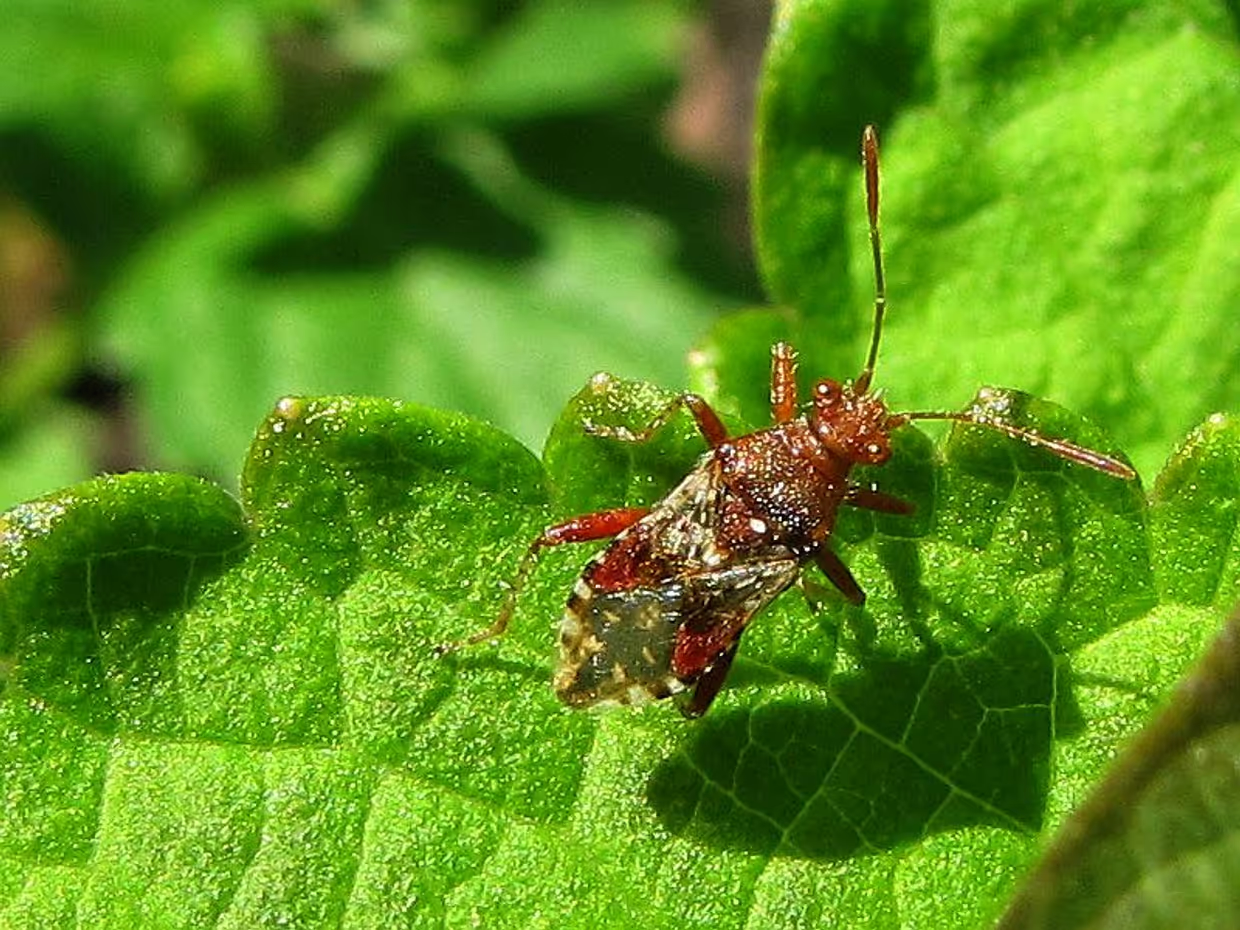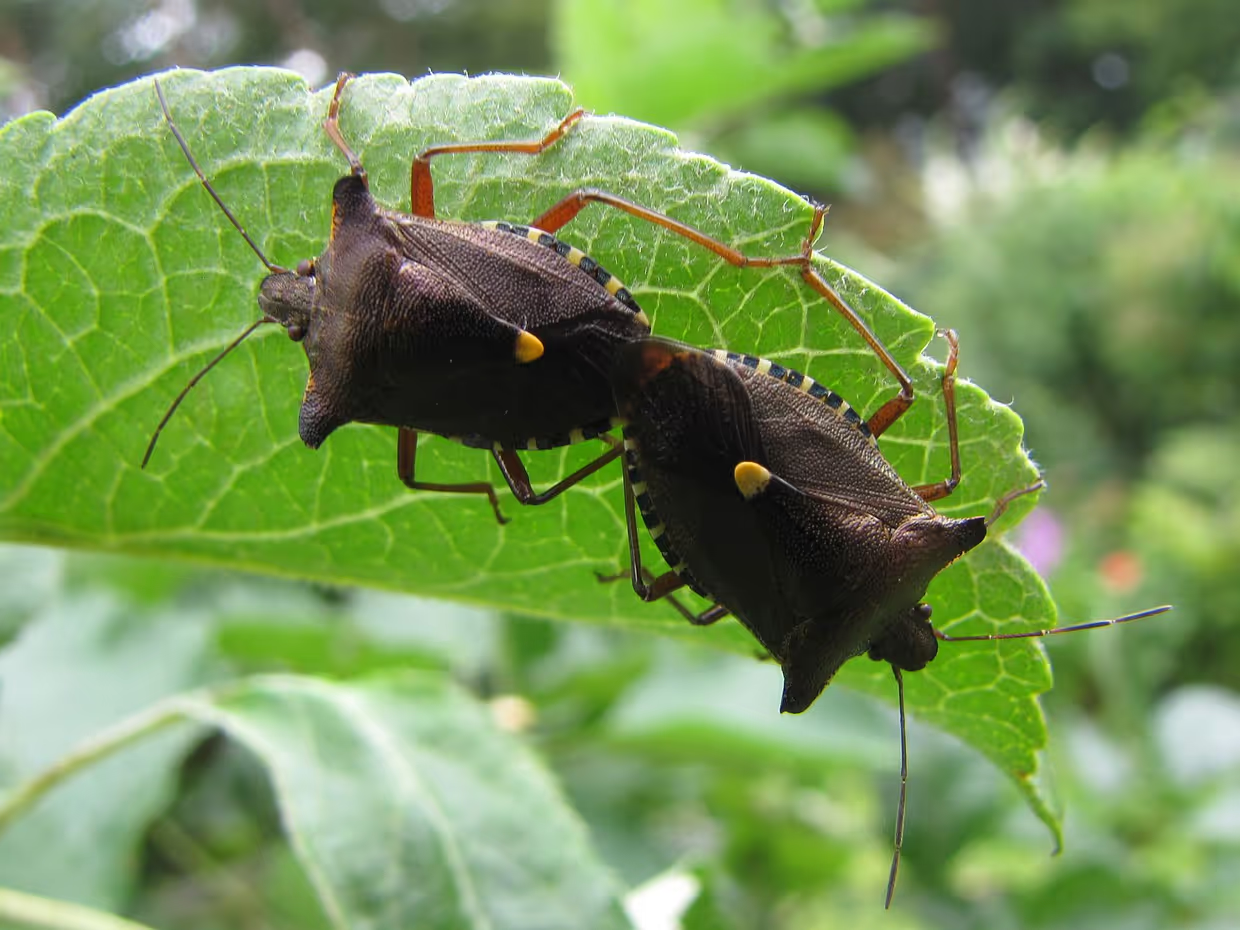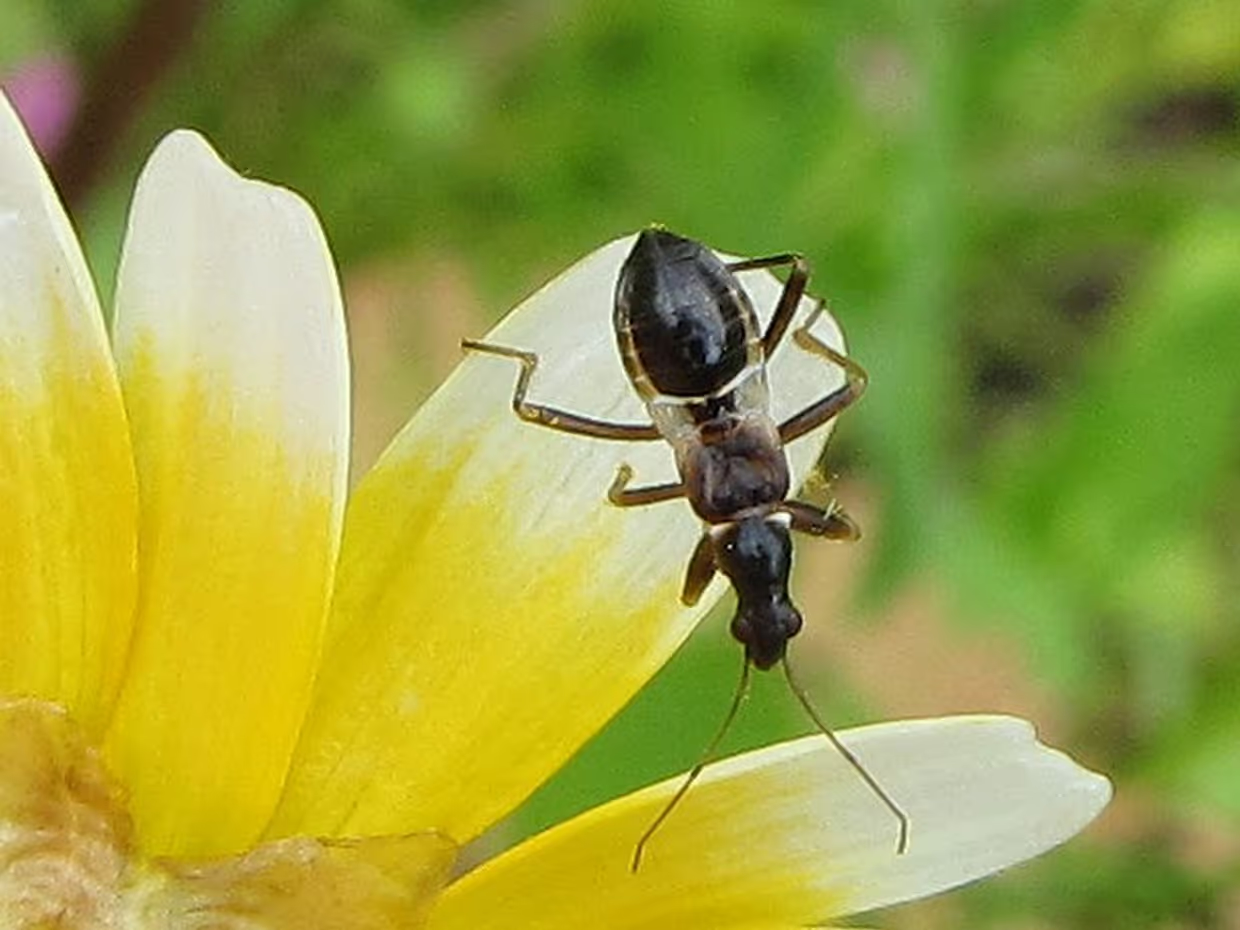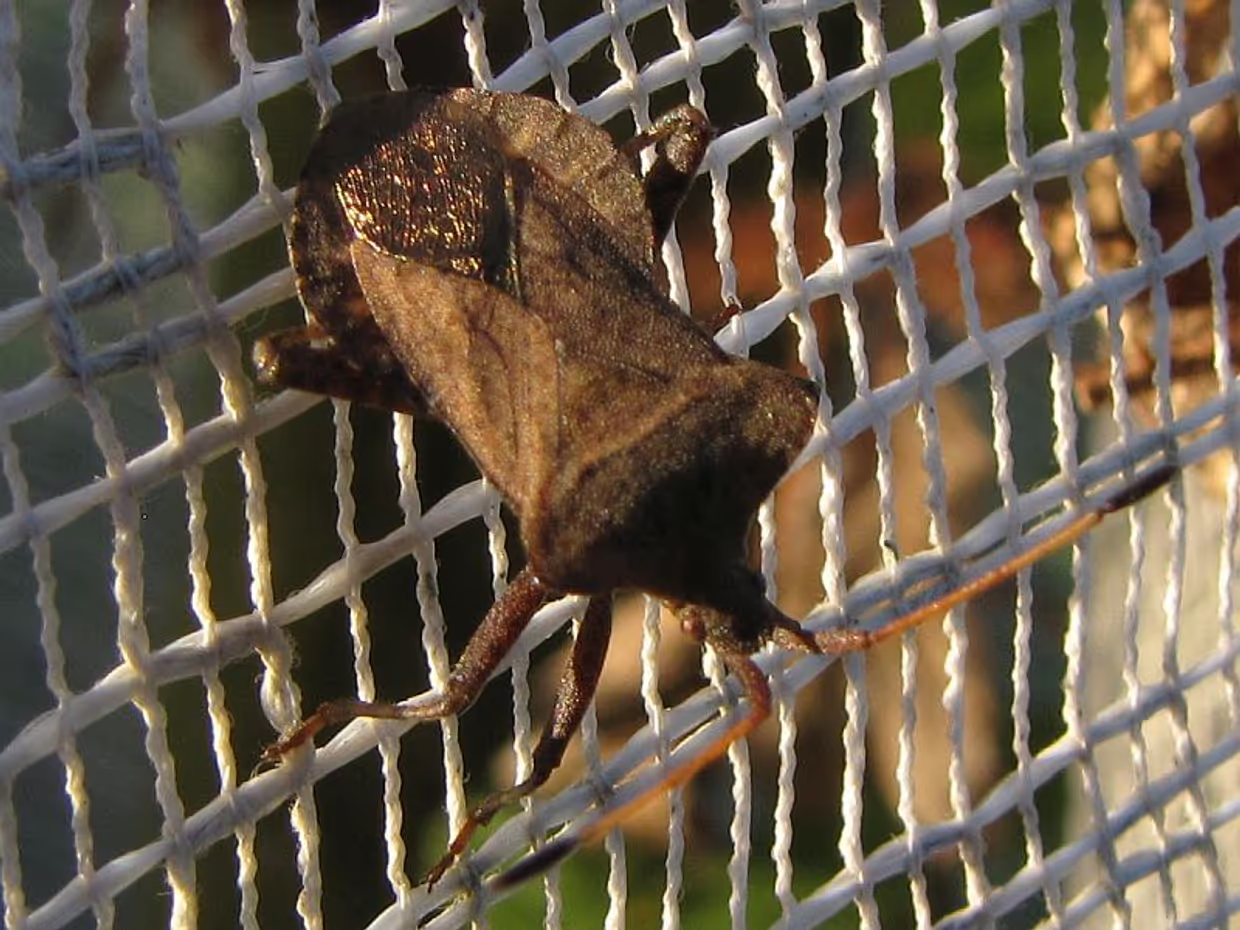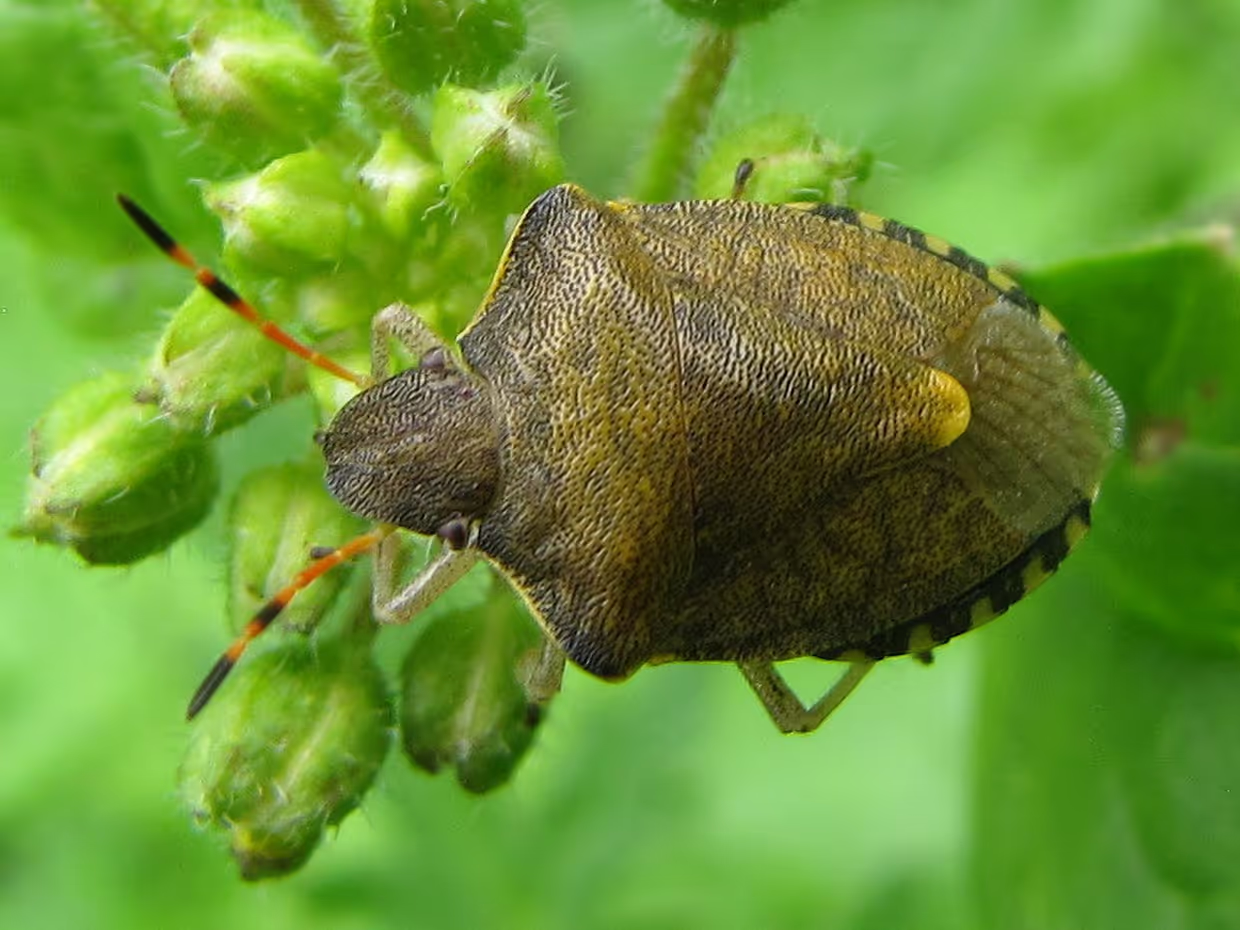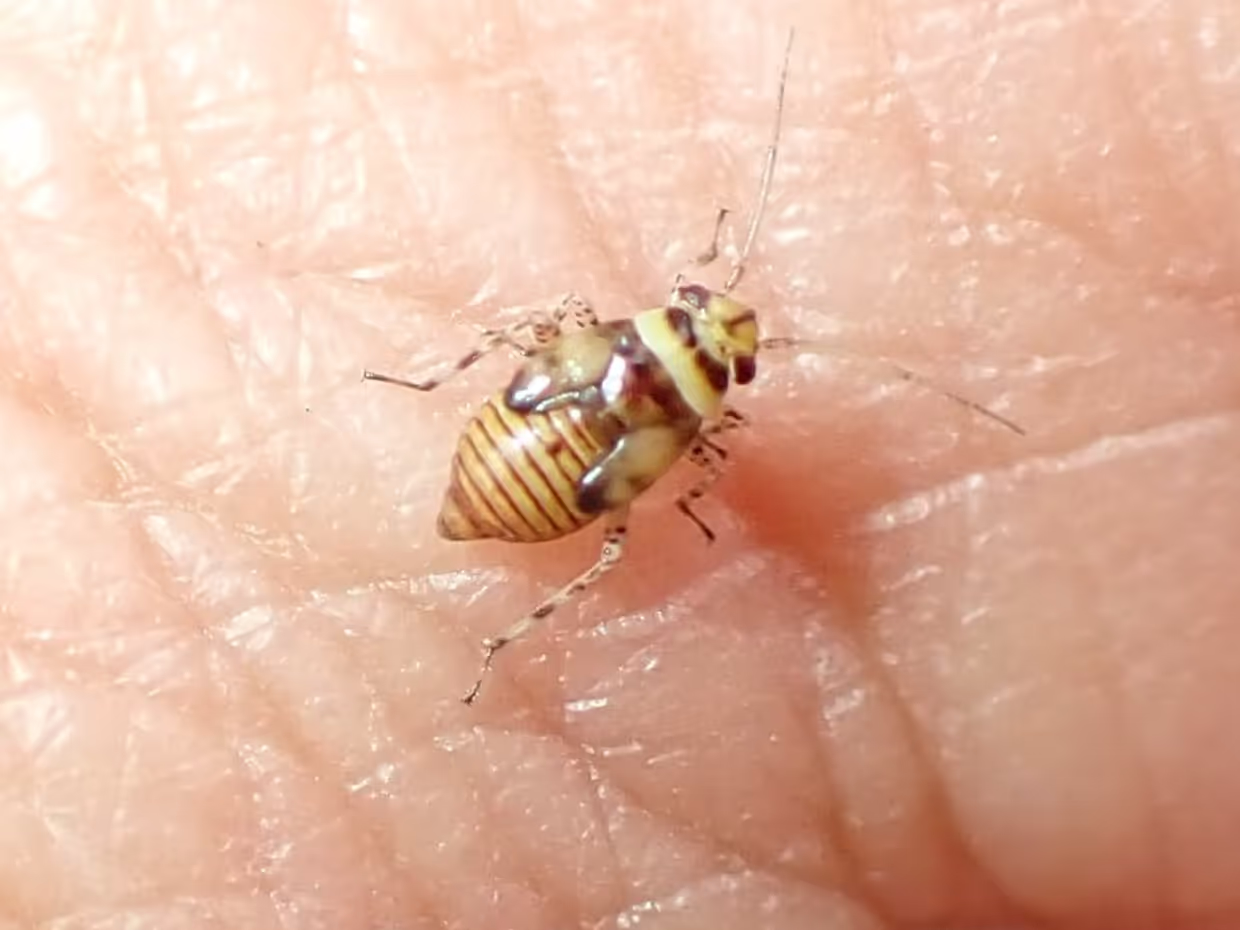A shield on the back. A stiletto-like mouthpart with which they prick a plant or animal to suck fluids from it. Sounds impressive. These are remarkable, little creatures, with beautiful patterns and colours. Join us to explore the UT campus to get to know a few species and learn a little more about true bugs and their role in the ecosystem.
During Bioblitz 2024, we came across many bugs that we had not seen before. If you want to see a list of all the bugs seen on the UT campus, click here.
What are true bugs?
True bugs (Heteroptera) are small insects, often less than 1 cm in size, distinguished by their piercing-sucking mouthparts. These allow them to extract nutrients from plants or animals. They possess two pairs of wings with different structures ('hetero' = different, 'ptera' = wings). The forewings are divided into two parts: the hardened, coloured anterior section and the membranous, transparent posterior part. The hindwings are entirely membranous. A key characteristic of true bugs is the visible heart-shaped scutellum (a triangular shield) on their back. Many species also have scent glands, which they use as a defence mechanism.
True bugs can be classified based on their diet:
- Phytophagous (plant-eating): feed on leaves, stems, fruits, or seeds.
- Zoophagous (predatory): prey on other insects and small arthropods.
- Zoophytohagous (omnivorous): consume both plants and animals.
Some species feed on the blood of mammals (e.g., bed bugs) or birds (e.g., swallows or pigeons). While certain species can damage crops, others play a beneficial role in agriculture as natural predators of pests, particularly in greenhouses.
True bugs have a relatively short lifespan, ranging from a few weeks to several months, though some can live for over a year. Their main activities involve foraging, mating, and laying eggs. Juveniles, called nymphs, undergo five moults before reaching adulthood. Depending on the species, overwintering occurs at the egg, nymph, or adult stage.
Species of true bugs
There are approximately 675 species of true bugs in the Netherlands, with 98 observed on the University of Twente campus. Some species inhabit specific plants, known as their host plants. True bugs are found on trees, shrubs, mosses, grasses, herbs, mushrooms, soil, on the water surface or even in the water. Tools like sweep nets or beating sheets are effective for collecting bugs, while ground-dwelling species can be caught using pitfall traps (e.g., burying a cup at ground level).
Certain true bugs display warning colours that deter predators like birds. Experiments have shown that these bugs are more likely to be eaten if their colours are altered. Some species are toxic due to compounds from their host plants and rely on their scent glands for defence, which often emit a foul odour (hence the term stink bugs).
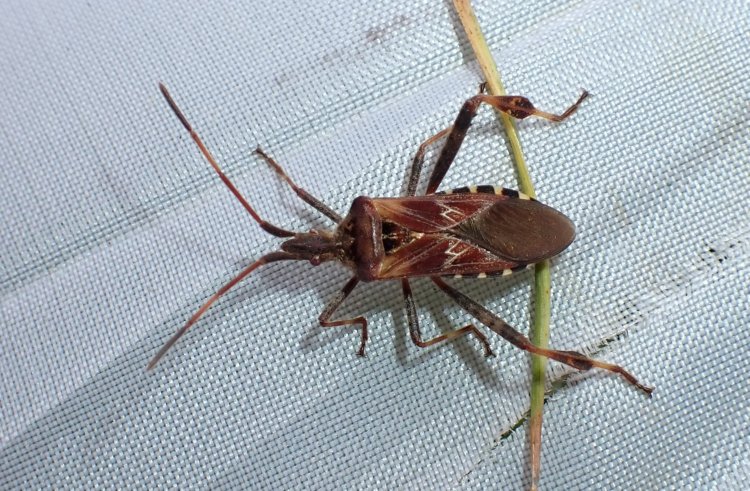
Western Conifer Seed Bug, Leptoglossus occidentalis. Photo: Wim Bakker
The Western conifer seed bug is the largest and perhaps most striking species (~2 cm). Its name refers to the widened, flattened hind tibiae. Originally from North America, it feeds on conifer seeds. In the Netherlands, it is not considered harmful as no conifer seeds are commercially produced here.
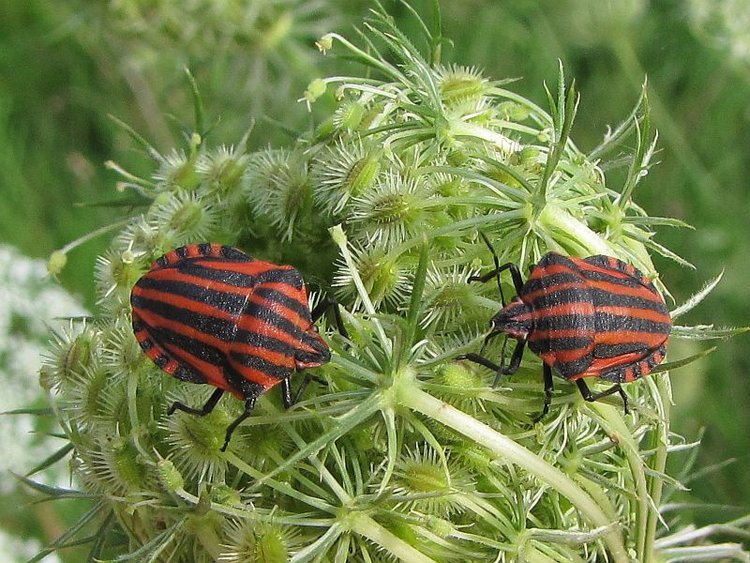
Striped Bug, Graphosoma italicum. Photo: Marian and Bert
The striped bug can easily be recognized by its bold red-and-black stripes on the back and spotted underside, it was once rare in the Netherlands, with sightings limited to South Limburg. Since 1990, however, it has spread throughout the country due to climate change. It lives on umbellifers, such as cow parsley and wild carrot.
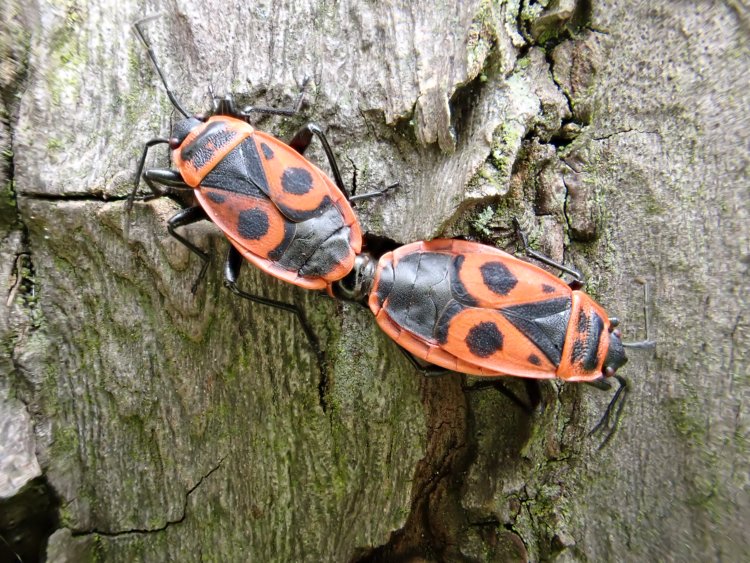
Fire Bug, Pyrrhocoris apterus. Photo: Wim Bakker
Known for its warning coloration, the fire bug feeds on seeds that have fallen to the ground from plants like lime trees and mallows. Fire bugs often gather in groups. Most individuals have reduced wings, but long-winged variants contribute to gene flow and species dispersal. Birds tend to avoid this species due to its bright colours.
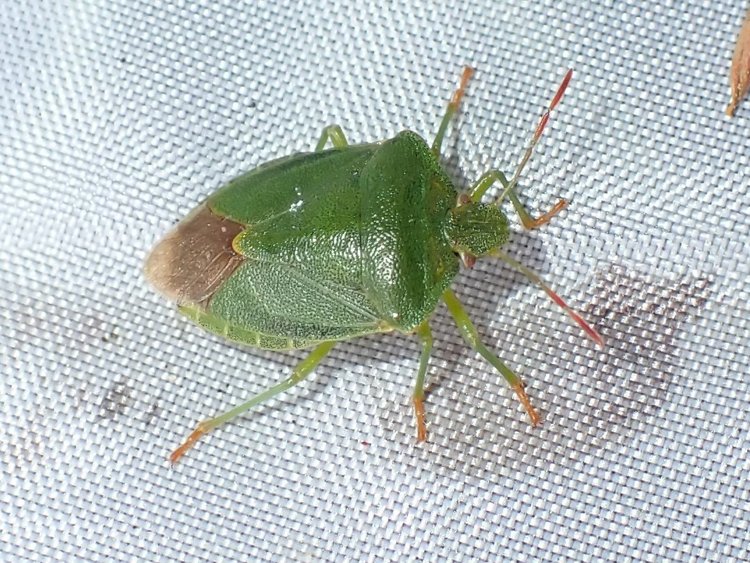
Green Shield Bug, Palomena prasina. Foto: Wim Bakker
The Green shielt bug, also known as the green stink bug, feeds on plant sap from brambles and nettles. Overwintering adults change colour from green to brown to blend into their surroundings, reverting to green in spring — a phenomenon called seasonal dimorphism. When threatened, they emit a pungent odour as a defence.
Role of true bugs in the ecosystem
True bugs play a vital role in maintaining ecological balance. They serve as prey for birds and insects while feeding on plants and other animals. Some parasitic wasps lay their eggs inside the eggs of true bugs, using them as nourishment. Parasitic flies, on the other hand, deposit their eggs on nymphs or adult bugs, whose bodies are consumed from the inside out.
Cultivated predatory bugs are often used as biological pest control in greenhouses in crops like tomatoes and peppers. However, introducing non-native species sometimes leads to unintended consequences, such as these bugs establishing populations outside the greenhouse.
Plants serve as both a food source and habitat for true bugs. Their presence indicates a healthy ecosystem, and each species plays a role in sustaining biodiversity. Preserving these species is critical to maintaining ecological balance.
Biodiversity at UT
Strengthening biodiversity on our campus is one of our sustainability goals at the University of Twente. By improving monitoring, we gain knowledge about biodiversity on campus in general, which helps us decide on the best ways to support it. In 2024, we started the yearly Bioblitz, in which anyone can help monitor species via the app ObsIdentify. Several activities were organised to raise awareness of biodiversity (such as bird observation). A biodiversity council was established, where CFM (Campus & Facility Management) consult with biodiversity enthusiasts on how maintenance can contribute to an improved habitat for species. Furthermore, thanks to a Climate Centre grant, we are working on making data on green maintenance and biodiversity accessible for research and education.
Would you like to find out more about sustainability at UT? Please go to utwente.nl/sustainability.

